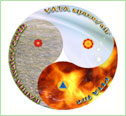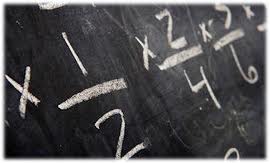 We are all different. We have our physical differences, but beyond that we respond to information and situations differently, we learn differently and we experience the world differently. I like to say ‘my red, cannot be the same color as your red.’ It’s just not possible that how I see the color red will be exactly the same way that you do. That in itself is something to think about!
We are all different. We have our physical differences, but beyond that we respond to information and situations differently, we learn differently and we experience the world differently. I like to say ‘my red, cannot be the same color as your red.’ It’s just not possible that how I see the color red will be exactly the same way that you do. That in itself is something to think about!
When it comes to our children and parenting consciously, I find that it is really helpful to have as much information as possible in terms of understanding who they are, why they act the way they do and what to expect in given situations.
Caidin, for example, doesn’t like endings. It doesn’t matter what the ending is, he doesn’t like them. The last day of Summer, the last day of school, the end of a vacation, the end of the evening; he doesn’t like them. He holds on to the experience and doesn’t want to let it go. But as soon as he’s past that moment, he’s into the next thing. He doesn’t like endings, but that experience doesn’t trickle out into the next thing. Leading up to the ending though is particularly difficult, so we have learned to help him talk about and put words to whatever it is he is feeling as he moves to an ending. When we were moving out of Brooklyn he and I decided to make a memory book, so we walked around the neighborhood taking pictures of places and people that we didn’t want to forget. It was a great way to work through the ending and know at the same time that he wouldn’t be leaving it all behind, he’d have the memory book.
In addition to understanding your child’s nature, there are many non-conventional ways to gather greater insight into who your child is and to know in what ways certain situations will affect them.
I thought it would be helpful to explore some of these ‘out-of-the-box’ ways of knowing your child. These are all modalities that can offer you a unique perspective, help you better understand what makes your child tick and help you better support your child holistically.
 Astrology – From my experience, Astrology holds the clues to what we are working on and in what way. I have never used astrology as a way of foreseeing what will happen, but I do find it helpful in better understanding the underlying aspects of who we are. Each astrological sign meets the world in their own unique way. I have gained such great insight into Caidin’s nature by exploring his astrological chart. He is a Taurus Sun, Cancer Moon and Leo Rising. It is amazing to me that he fits these placements to a T. Our Sun sign informs who we are intrinsically. Or Moon sign informs our emotions and our Rising sign is connected to how we show ourselves to the world. Intrinsically Caidin would rather be at home with us then any where else, he loves the idea of food, is super sensitive to textures, it takes him forever to make a decision and when his mind is made up, it’s made up – all Taurus dynamics. Emotionally he is deeply sensitive, very concerned about the well-being of his friends, easily wounded and feels everything – all Cancer dynamics. To the world he shows a leader and is a consummate entertainer and he has a fiery temper – all Leo dynamics.
Astrology – From my experience, Astrology holds the clues to what we are working on and in what way. I have never used astrology as a way of foreseeing what will happen, but I do find it helpful in better understanding the underlying aspects of who we are. Each astrological sign meets the world in their own unique way. I have gained such great insight into Caidin’s nature by exploring his astrological chart. He is a Taurus Sun, Cancer Moon and Leo Rising. It is amazing to me that he fits these placements to a T. Our Sun sign informs who we are intrinsically. Or Moon sign informs our emotions and our Rising sign is connected to how we show ourselves to the world. Intrinsically Caidin would rather be at home with us then any where else, he loves the idea of food, is super sensitive to textures, it takes him forever to make a decision and when his mind is made up, it’s made up – all Taurus dynamics. Emotionally he is deeply sensitive, very concerned about the well-being of his friends, easily wounded and feels everything – all Cancer dynamics. To the world he shows a leader and is a consummate entertainer and he has a fiery temper – all Leo dynamics.
This information has helped me in so many different ways. When we take a trip his only concern is what we will eat, how we will eat, and how many meals we will have while traveling. He’s safety points are connected to food (Taurus). When we travel I am certain to let him know early on what the food situation will be, this allows him to be calm and relaxed. I was also able to use this information to help him learn fractions (read How To Teach A Taurus Child About Fractions)
Over at The Conscious Mom’s Guide I’ve posted a wonderful article by Astrologer Monica Wallach – Better Parenting Through Astrology. In it Monica offers insight into each Sun sign, what you might expect from your child and ways to support that Sun sign specifically.
Iridology – Iridology, which uses an analysis of the markings, colors and textures of the iris to assess overall health and wellness, is more heavily regarded in Europe than in the United States and I think that is unfortunate. Not only can it be incredibly helpful in understanding the way in which the body is working holistically, it is equally helpful in understanding our basic nature. I use Iridology as it was taught to me by Farida Sharan, founder of The School of Natural Medicine. It seems today’s Iridologists have streamlined their information, but I hold strong to what I learned with Farida. There are key markings that translate into constitutions and if you know your child’s constitutions (as Farida teaches it) you can not only better support them emotionally, you can help them to make good choices nutritionally. Much of the constitution can be gathered by looking for key markings in your child’s iris. You will find more about understanding your child through their iris plus photos at The Conscious Mom’s Guide. Caidin is Anxiety/Gastric – which tells me that when he is stressed, it affects his stomach. I took his first iridology photos at six months, so I knew this from the get-go. Today, it is not uncommon for Caidin to complain of a stomach ache. Having this information, after I rule out anything physical, I move to helping him sort out what’s making him anxious or nervous.
 Ayurveda is a traditional Hindu healing system, considered by many to be the oldest healing practice on the planet. In Ayurveda, the focus is on creating and maintaining balance in the whole being by understanding the three doshas; Vatta, Pitta and Kapha. We all have each, but for each of us, one dosha will be more prominent. If you know what dosha your child is, again, it will help you in better understanding why she does what she does and how to support her in her growth. Vatta kids tend to sleep lightly, learn quickly, but forget just as quickly and have a tendency to worry and experience constipation. Pitta kids tend to feel hot easily, can’t skip meals, are enterprising and can be irritable and angry. Kapha kids tend to have greater strength, greater endurance, slow and methodical, and are tranquil and steady. Caidn is Kapha/Vatta. By knowing this I can work with his diet to help keep his system in balance. If Ayurveda interests you, a great book to explore is Perfect Health for Kids: Ten Ayurvedic Health Secrets Every Parent Must Know By John Douillard
Ayurveda is a traditional Hindu healing system, considered by many to be the oldest healing practice on the planet. In Ayurveda, the focus is on creating and maintaining balance in the whole being by understanding the three doshas; Vatta, Pitta and Kapha. We all have each, but for each of us, one dosha will be more prominent. If you know what dosha your child is, again, it will help you in better understanding why she does what she does and how to support her in her growth. Vatta kids tend to sleep lightly, learn quickly, but forget just as quickly and have a tendency to worry and experience constipation. Pitta kids tend to feel hot easily, can’t skip meals, are enterprising and can be irritable and angry. Kapha kids tend to have greater strength, greater endurance, slow and methodical, and are tranquil and steady. Caidn is Kapha/Vatta. By knowing this I can work with his diet to help keep his system in balance. If Ayurveda interests you, a great book to explore is Perfect Health for Kids: Ten Ayurvedic Health Secrets Every Parent Must Know By John Douillard
 Elements – We can look to astrology for an exploration of our child’s elements. In astrology, each sign is associated with one of four elements: Air, Water, Earth or Fire. If you look at your child’s entire chart you can gather if they are balanced or more heavily weighted in one element or another. A child who has a lot of Air in their chart may have more a tendency to be daydreaming, flighty, or very much in their head thinking about every little detail. A child who has a lot of fire will have a fiery temperament. A child with a lot of water in their chart will be emotional and sensitive and a child with a lot of earth will be very grounded and possibly willful. If you know your child is heavily waited in one element over the other, you can learn to support them by providing foods and activities that will provide balance. For example if your child is all Air, having him help you in the garden will provided a natural way to be grounded. Or if your child has a lot of fire, taking Epsom salt baths will help to take the fiery edge off. To gather an overview of your child’s chart visit Astro.com for a free chart. We can also look to Traditional Chinese Medicine to explore our child’s element. In TCM there are 5 elements: Wood, Fire, Earth, Metal , Water. For me, this information is a little more complicated – drawing in information about Chi, organs, tastes, colors, seasons and emotions, all very helpful information, but not as easy to assess on your own. If you are interested in exploring the Traditional Chinese Medicine elements a great book is Between Heaven and Earth: A Guide To Chinese Medicine by Beinfeld and Korngold. In it you will find sections that describe each element.
Elements – We can look to astrology for an exploration of our child’s elements. In astrology, each sign is associated with one of four elements: Air, Water, Earth or Fire. If you look at your child’s entire chart you can gather if they are balanced or more heavily weighted in one element or another. A child who has a lot of Air in their chart may have more a tendency to be daydreaming, flighty, or very much in their head thinking about every little detail. A child who has a lot of fire will have a fiery temperament. A child with a lot of water in their chart will be emotional and sensitive and a child with a lot of earth will be very grounded and possibly willful. If you know your child is heavily waited in one element over the other, you can learn to support them by providing foods and activities that will provide balance. For example if your child is all Air, having him help you in the garden will provided a natural way to be grounded. Or if your child has a lot of fire, taking Epsom salt baths will help to take the fiery edge off. To gather an overview of your child’s chart visit Astro.com for a free chart. We can also look to Traditional Chinese Medicine to explore our child’s element. In TCM there are 5 elements: Wood, Fire, Earth, Metal , Water. For me, this information is a little more complicated – drawing in information about Chi, organs, tastes, colors, seasons and emotions, all very helpful information, but not as easy to assess on your own. If you are interested in exploring the Traditional Chinese Medicine elements a great book is Between Heaven and Earth: A Guide To Chinese Medicine by Beinfeld and Korngold. In it you will find sections that describe each element.
 Learning Style– There are three styles of learning: Audio, Visual and Kinesthetic. If you child is an audio learner, she learns by listening to what you have to say. If you read her something, she remembers it. If your child is a visual learner, he needs to SEE the information in order to understand it. If your child is a kinesthetic learner, she will need to experience the information before it becomes part of her knowledge base. I was talking to Caidin’s teacher about this. They are working on strategies and systems for writing reports. The were using a strategy where they write down a few ideas about a topic, then they write something about each of those ideas and then they take the information and turn it into a report on the initial topic. One day, Caidin’s teacher had them act out what they wanted to write about first and she told me that Caidin’s ability to translate what was in his mind to the paper was far greater. He’s a kinesthetic learner (just like his mom!). He needs to experience the information before he can convey it.
Learning Style– There are three styles of learning: Audio, Visual and Kinesthetic. If you child is an audio learner, she learns by listening to what you have to say. If you read her something, she remembers it. If your child is a visual learner, he needs to SEE the information in order to understand it. If your child is a kinesthetic learner, she will need to experience the information before it becomes part of her knowledge base. I was talking to Caidin’s teacher about this. They are working on strategies and systems for writing reports. The were using a strategy where they write down a few ideas about a topic, then they write something about each of those ideas and then they take the information and turn it into a report on the initial topic. One day, Caidin’s teacher had them act out what they wanted to write about first and she told me that Caidin’s ability to translate what was in his mind to the paper was far greater. He’s a kinesthetic learner (just like his mom!). He needs to experience the information before he can convey it.
I love knowing Caidin through so many different modalities. It also helps him in knowing who he is. By having this information, Caidin understands that many of the ways he approaches life are intrinsic, and at the same time he knows that there are many ways that he can help create his own inner-balance.
© 2012 Christine Agro
Have questions about your child or need support? Christine offers private readings as well as on-line support at The Consicous Mom’s Guide
Christine Agro is a clairvoyant, naturopath, Master Herbalist, conscious mom and author of 50 Ways to Live Life Consciously as well as of The Conscious Living Wisdom Cards (Special Moms’ Edition). Christine is founder of The Conscious Mom’s Guide , a membership site where she helps support you on your own journey of living life consciously and on your journey of being a Conscious parent. You can also join Christine on Facebook. To contact Christine, invite her to speak or to schedule an appointment with her please email her.


